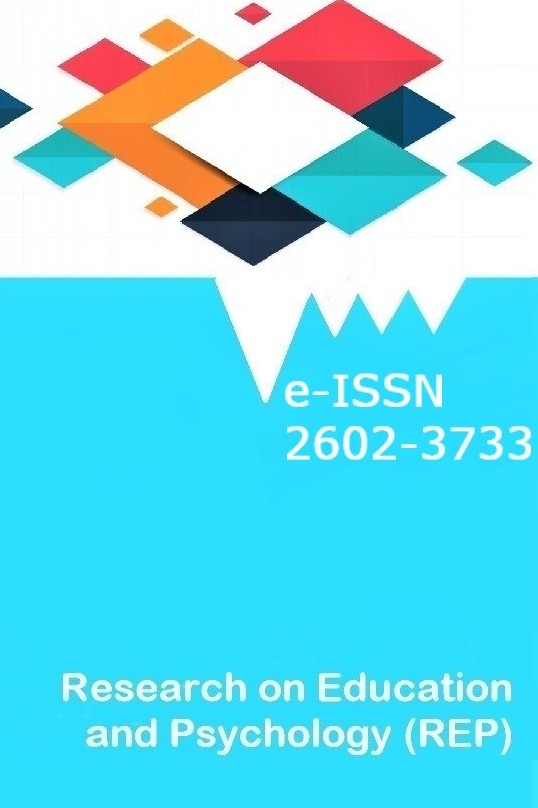EFL students’ Language Needs Assessment in Private General English Classes
Anahtar Kelimeler:
English Language Learning, Needs Assessment, EFL
EFL students’ Language Needs Assessment in Private General English Classes
Undoubtedly English language has become a universal language and mastering it has become a norm and a must for all students who will embark on the labor market after graduation. Therefore, a lot of students resort to language centers to learn English language in Turkey. However, students’ language needs ought to be determined to ensure the students’ utmost language development. This research aims to determine students’ language needs within the four macro skills (reading, listening, speaking, and writing). A quantitative descriptive approach was used to determine the students’ required skills to learn and become proficient in English Language. A survey was conducted at Akin Dil language centers in Konya city in Turkey. 101 questionnaires were distributed, and 97 were considered eligible for the research. Data were analyzed through SPSS and the results showed that there is an extensive gap between the current students’ language level and the level they want to achieve.
Keywords:
English Language Learning, Needs Assessment, EFL,
___
- Adıgüzel, O. C. (2016). Eğitim programlarının geliştirilmesinde ihtiyaç analizi el kitabı. Ankara: Anı Yayıncılık.
- Altschuld, J. W., & Watkins, R. (2014). A primer on needs assessment: More than 40 years of research and practice. New Directions for Evaluation, 2014(144), 5-18.
- Astika, G. (1999). The role of needs analysis in English for specific purposes. TEFLIN Journal, 10(1), 31-47.
- Aydoğan, H., & Akbarov, A. A. (2014). The four basic language skills, whole language & intergrated skill approach in mainstream university classrooms in Turkey. Mediterranean Journal of Social Sciences, 5(9), 672-672.
- Briana, J. C. D., & Mutia, M. L. D. (2019). An English language needs analysis of information technology students. In Linguistic Society of the Philippines National Conference and General Meeting. doi (Vol. 10).
- Demircan, Ö. (1988). Dünden bugüne Türkiye'de yabancı dil: Arapça, Farsça, Fransızca, İngilizce, Almanca, Latince, İtalyanca--dillerinin öğretimi ve Türkçenin bu diller karşısındaki durumu (Vol. 86). Remzi Kitabevi.
- Demircan, Ö. (1990). Yabancı dil öğretim yöntemleri: dil bilimleri; öğrenme ve öğretme yolları; yabancı-dil öğretim yaklaşımları ve yöntemleri. Ekin Eğitim, Yayıncılık ve Dağıtım
- Gupta, K. (2011). A practical guide to needs assessment. John Wiley & Sons.
- Haznedar, B. (2004). Türkiye’de yabancı dil öğretimi: İlköğretim yabancı dil programı. Boğaziçi Üniversitesi Eğitim Dergisi, 21(2), 15-29.
- Kaufman, R. A., & English, F. W. (1979). Needs assessment: Concept and application. Educational Technology.
- Kaufman, R. A., & Harsh, J. R. (1969). Determining Educational Needs: An Overview.
- Kılıç, A., Aydın, M., Ökmen, B., & Şahin, Ş. (2019). Kuramdan Uygulamaya İhtiyaç Belirleme (1st ed.). Pegem Akademi.
- Köksal, D., & Ulum, Ö. G. (2018). The state of EFL teacher education in Turkey: From past to present. ELT Research Journal, 7(4), 161-174.
- Matusky, R. (2018). Needs assessment vs. needs analysis — What’s the difference? Medium. https://medium.com/@Randy_Matusky/needs-assessment-vs-needs-analysis-whats-the-difference-54a9eef0b44c Retrieved on April 17, 2021.
- Özdemir, E. A. (2006). Türkiye’de İngilizce öğreniminin yaygınlaşmasının nedenleri. Mersin Üniversitesi Eğitim Fakültesi Dergisi, 2(1).
- Richards, S. C. (1998). Defining and assessing need: An ethnographic study of the community care needs assessment of older people.
- Royse, D., Staton-Tindall, M., Badger, K., & Webster, J. M. (2009). Needs assessment (Vol. 8). OUP USA.
- Sezer, M. (1992). An investigation of language learning strategies in bilingual and monolingual beginning level Turkish EFL students (Doctoral dissertation, Bilkent University).
- Watkins, R., Meiers, M. W., & Visser, Y. (2012). A guide to assessing needs: Essential tools for collecting information, making decisions, and achieving development results. World Bank Publications.
- Yayın Aralığı: Yılda 4 Sayı
- Başlangıç: 2017
- Yayıncı: Bülent DİLMAÇ
Sayıdaki Diğer Makaleler
Analysis of the Scientific Research on Inclusive Education
Coping Strategies with Boredom in Class: Scale Development and Validation
A Review of New Istanbul B1 Level Textbook Writing Activities
Ezgi KOCAMANGİL YILDIRIM, Burcu ŞENTÜRK
Pre-service Mathematics Teachers’ Conceptual Knowledge Related To Basic Concepts And Operations
Zeki AKSU, Senem KALAÇ, Merve ÖZKAYA, Alper Cihan KONYALIOĞLU
Fadim Büşra KELEŞ, Şahin KESİCİ, Mehmet AK
Opinions of Pre-service Elementary School Mathematics Teachers on Misconceptions
Semiha KULA ÜNVER, Aysun Nüket ELÇİ
The Relationship between Mathematics Anxiety and Mathematics Achievement: Meta Analysis Study
